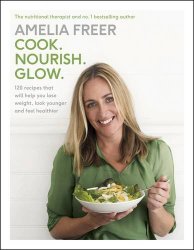
|

|
|


|
Water-Soluble Vitamins |
|
|
Water-soluble vitamins (vitamin C and the B vitamins) are carried in the bloodstream. The body uses the amount it needs and then gets rid of the extra in the urine. They aren't stored, so you need to consume water soluble vitamins regularly to stay healthy. Water-soluble vitamins can be destroyed more easily than fat-soluble vitamins in food preparation, cooking and storing.
Vitamin B1: Thiamin
Thiamin is involved in many steps of the process of converting carbohydrate into a usable form of energy - glucose. The hull,
or outer layer, of grains is high in thiamin. Since 1942, the Enrichment Act requires that thiamin be added to flour and cereals to compensate for the loss
of thiamin that occurs when grain is milled and processed.
Vitamin B2: Riboflavin
Riboflavin is needed to release the body's stored energy for use and is involved in many steps in the breakdown of carbohydrate,
protein and fat. It is involved with the functioning of vitamins B6 and niacin. Ultraviolet light, such as sunlight, destroys riboflavin, which is the reason
milk is sold in plastic containers that are opaque or waxed paper containers.
Vitamin B3: Niacin
Niacin is involved in many steps in the breakdown of carbohydrate, protein and fat. It is also important in the health of skin,
and the digestive and nervous systems.
Vitamin B5: Pantothenic Acid
Pantothenic acid is involved in the breakdown of carbohydrate, protein and fat. It plays a role in making fatty acids, cholesterol,
and some hormones. Milling destroys a lot of pantothenic acid in grains.
Vitamin B6: Pyridoxine
Pyridoxine is involved in the breakdown of protein and building non-essential proteins in the body. It is necessary to produce
red blood cells and in the proper functioning of nerve tissue. Processing of foods, heating and exposure to ultraviolet light reduces the content of
pyridoxine in foods.
Folate/Folic Acid
Folate is the form of the vitamin found in foods; folic acid is the synthetic form used in supplements and fortified foods.
Folic acid is essential for the creation of new cells (DNA and RNA). It is important in the formation of hemoglobin in red blood cells, and during pregnancy
for the growth of the fetus. It has been determined that pregnant women who don't consume enough folate, especially in the early stages of pregnancy, increase
their risk of having a baby with neural tube defects (spina bifida). Therefore, as of 1998 the FDA requires that all grain products (breads, cereals and pasta)
be fortified with 140mcg folic acid per kilogram of grain with the goal of increasing the folic acid intake of Americans.
Vitamin B12: Cobalamin
Vitamin B12, which is the more commonly used name, is needed along with folic acid to make red blood cells. Vitamin B12 is
involved in building and maintaining the covering that protects nerve fibers. A deficiency of B12 can cause a form of anemia, called pernicious anemia.
B12 is fairly stable in foods.
Vitamin C
Vitamin C is important in forming the protein collagen, which is part of the body's connective tissue. Collagen helps heal cut
and wounds and keeps you from bruising by maintaining firm blood vessels. Vitamin C protects you from infection by keeping the immune system healthy. It also
increases the absorption of iron from foods of plant sources (the non-heme form of iron). People who smoke have an increased need for vitamin C.
Biotin
Biotin is important in the breakdown of carbohydrate, protein and fat. Biotin is produced by the natural bacteria in the
intestine, so getting enough biotin is rarely a problem.
|
||
|
|
||
|
View Article on Fat-Soluble Vitamins
|
|
Copyright � 2008-2025 lowsugar-recipes.com. All Rights Reserved All trademarks are the property of their respective owners. |